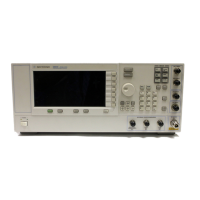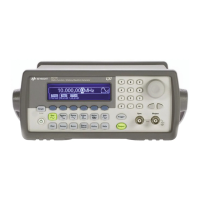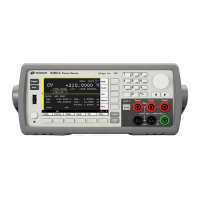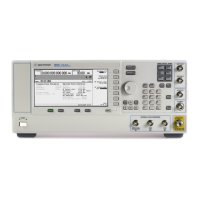126 Keysight EXG and MXG X-Series Signal Generators User’s Guide
Optimizing Performance for All Models
Using an Output Offset, Reference, or Multiplier
Setting an Output Reference
Using an output reference, the signal generator can output a frequency or amplitude that is offset
(positive or negative) by the entered value from a chosen reference value.
RF Output = reference value + entered value
To set a reference:
1. Set the frequency or amplitude to the value you want as the output reference level.
2. Frequency: Press Frequency > Freq Ref Set
The frequency displays 0.00 Hz, indicating that this is the RF output frequency “zero level.”
All frequencies entered are interpreted as being relative to this reference frequency.
Amplitude: Press Amptd > More > Amptd Ref Set
The amplitude displays 0.00 dB, indicating that this is the RF output amplitude “zero level.”
All amplitudes entered are interpreted as being relative to this reference amplitude.
Examples
Parameter
Example
#1
Example
#2
Example
#3
Comments
Reference: 50 MHz 50 MHz 2 GHz A reference value must be positive.
Entered (and displayed)
Value:
2 MHz −2 MHz −1 GHz The entered value can be positive or negative.
Output Frequency: 52 MHz 48 MHz 1 GHz
The signal generator alerts you if the output frequency or
amplitude is out of range.
IF Amplifier
RF Amplifier
Mixer
Filter
Signal Generator
(local oscillator)
Output Frequency = 1000 MHz
IF = 321 MHz
Antenna tuned to 1321 MHz
Selected Offset
321 MHz
−679 MHz
SIgnal Generator Display
1321 MHz (Antenna
Frequency)
321 MHz (IF Output)
IF Output
321 MHz
Indicates that a reference is on

